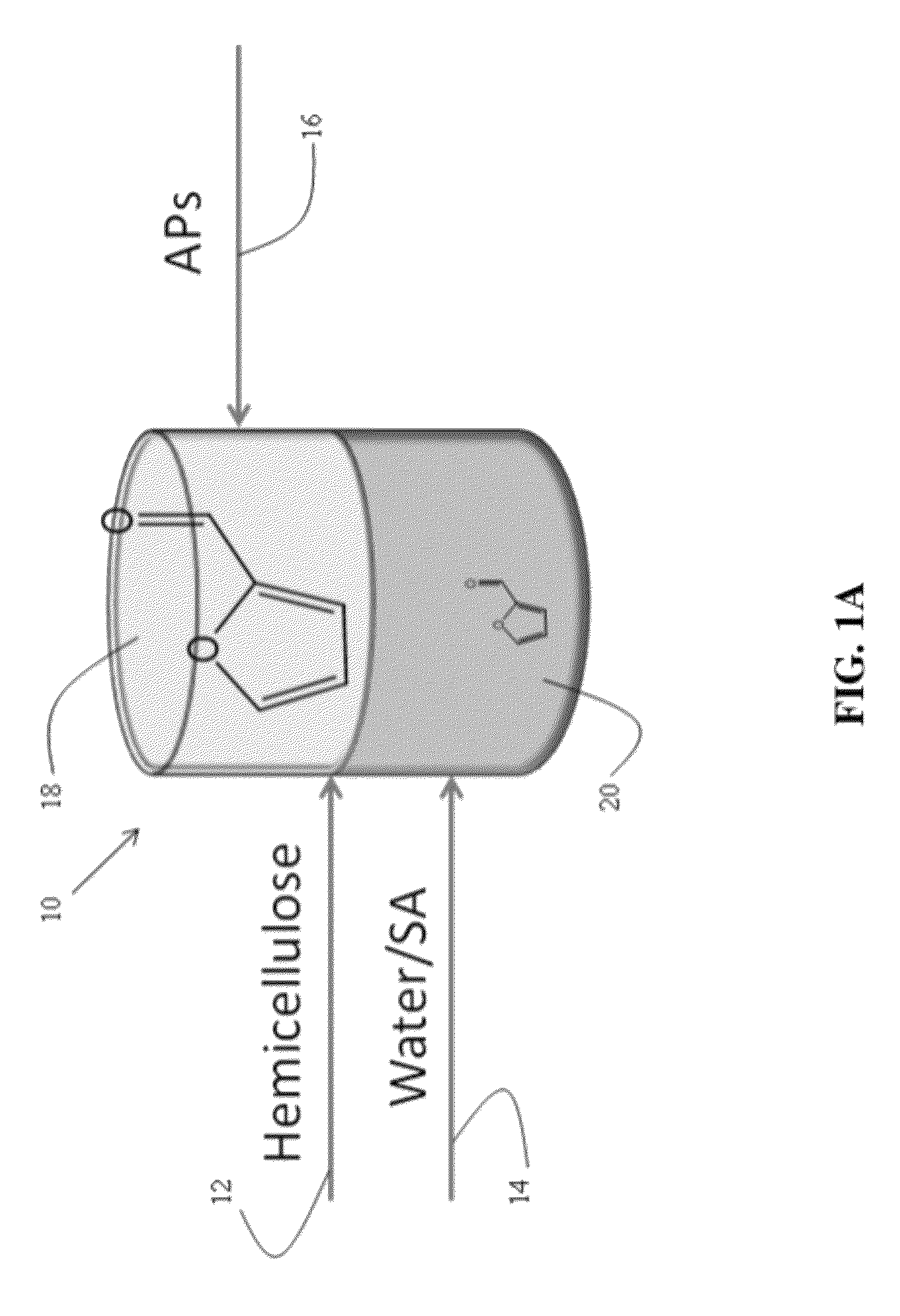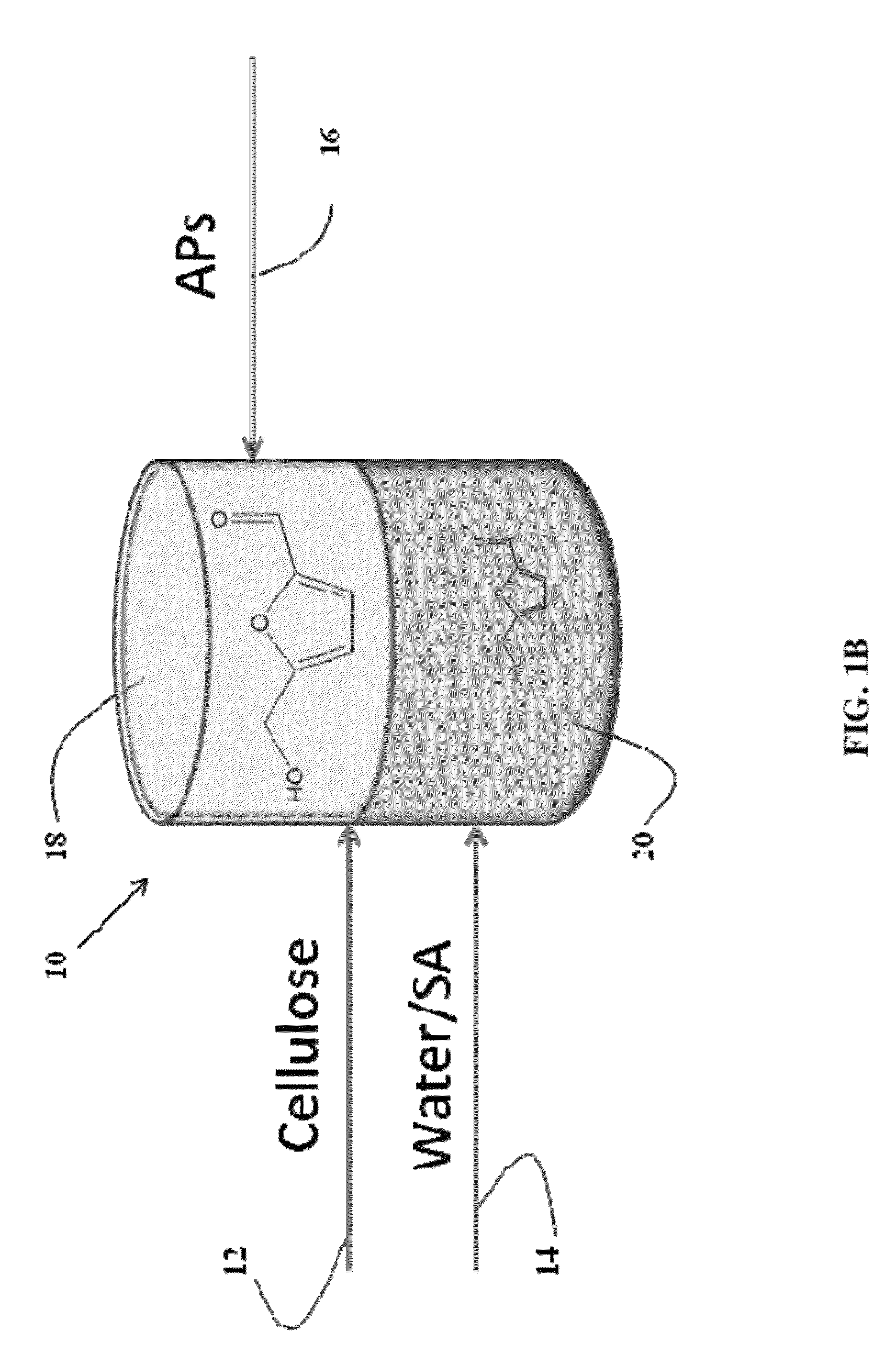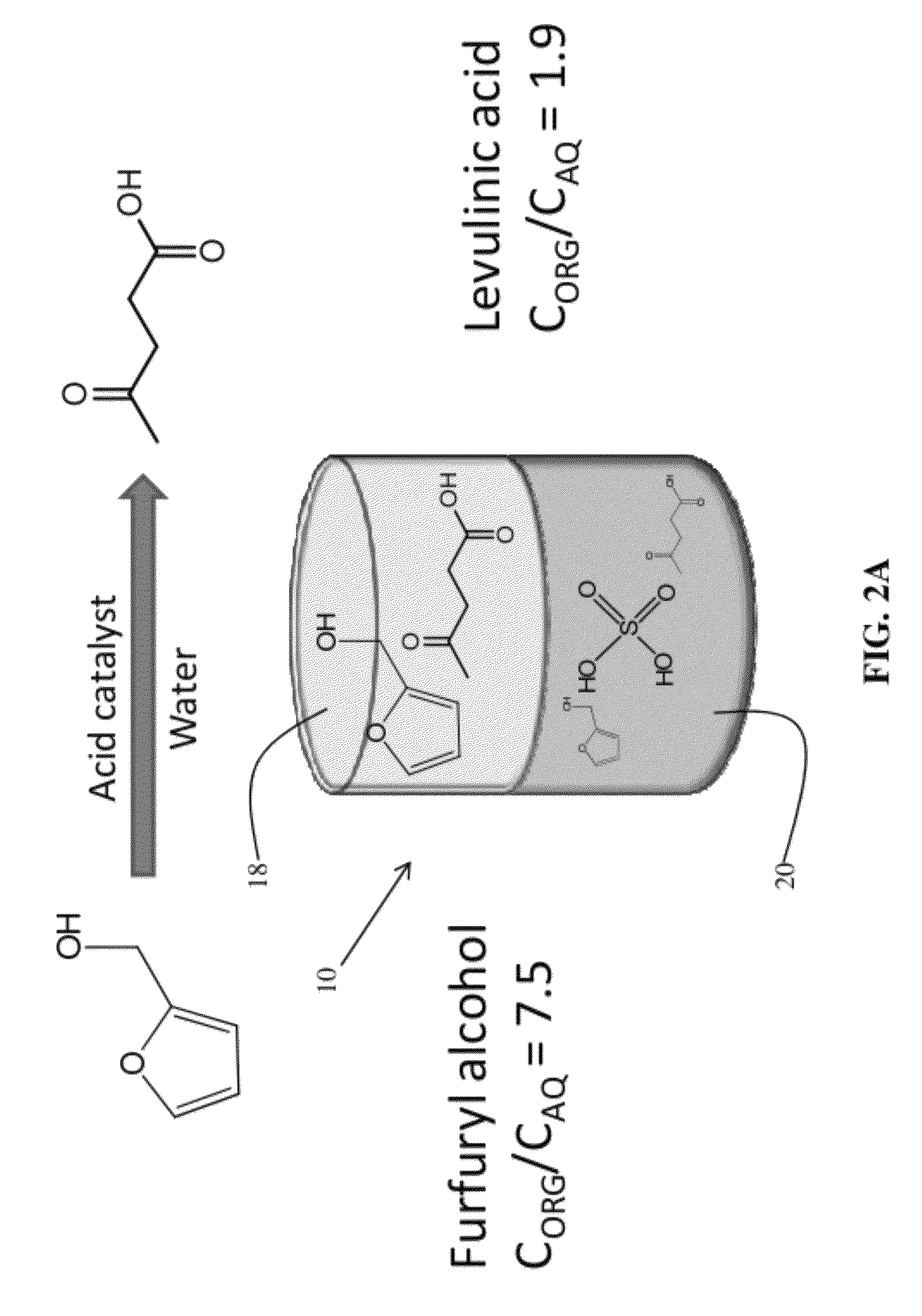Method to produce, recover and convert furan derivatives from aqueous solutions using alkylphenol extraction
a technology of alkylphenol and aqueous solution, which is applied in the preparation of carboxylic compounds, organic chemistry, chemistry apparatus and processes, etc., can solve the problems of high production cost and reduce the production cost of these derivative compounds, and achieve the effects of reducing the incidence of side reactions, maximizing furfural yields, and reducing the concentration
- Summary
- Abstract
- Description
- Claims
- Application Information
AI Technical Summary
Benefits of technology
Problems solved by technology
Method used
Image
Examples
example 1
Dehydration of Xylose to Furfural
[0113]Dehydration of xylose in aqueous solutions to obtain furfural was carried out using mineral acids, such as HCl. An organic extracting solvent, 2-sec-butylphenol (SBP), was used to extract furfural continuously to separate it from xylose and the mineral acid and to inhibit further degradation. The partition coefficient of furfural in a mixture SBP / water (ratio of the furfural concentration in SBP to the furfural concentration in water) is 35. The experiments were carried out in 10 mL glass reactors at 170° C. in a pre-heated oil bath using magnetic stirring.
[0114]In a typical experiment, aqueous xylose solutions of varied concentration were prepared. Typically, the HCl concentration in the aqueous phase was 0.1M HCl. The aqueous xylose solution and SBP were added into the glass reactor to reach the desired mass ratio (aqueous layer (g) / SBP (g)). To end the reactions, the glass reactors were taken out from the oil bath and cooled in an ethylene g...
example 2
Dehydration of Fructose to Hydroxymethylfurfural
[0118]Dehydration of fructose in aqueous solutions to obtain 5-hydroxymethylfurfural (HMF) is carried out using mineral acids, such as HCl. An organic extracting solvent, 2-sec-butylphenol (SBP), is used to extract HMF continuously to separate it from fructose and the mineral acid and to inhibit further degradation. The experiments were carried out in 10 mL glass reactors at 170° C. in a pre-heated oil bath using magnetic stifling. In a typical experiment, an aqueous fructose solution with a desired weight percentage was prepared to obtain a 0.1 M HCl and saturated with NaCl. The aqueous fructose solution and SBP were added into the glass reactor to reach the desired mass ratio (aqueous layer (g) / SBP (g)). To end the reactions, the glass reactors were taken out from the oil bath and cooled in an ethylene glycol / dry ice bath. The two phases were then separated and analyzed to quantify HMF and fructose using HPLC. Using 1.5 g of aqueous ...
example 3
Hydrogenation of Furfural to Furfuryl Alcohol Using Metal Catalyst
[0119]Liquid phase reduction of furfural to furfuryl alcohol in 2-sec-butylphenol (SBP) takes place with molecular hydrogen over a Pt—Sn bimetallic catalyst supported on SiO2 support. Silica-supported Pt / Sn catalysts were prepared by sequential impregnation according to Dumesic et al (Catal. Today 2000, 55, 213) to reach 3:1 ratio of Pt:Sn. Platinum was added to Cab-O-Sil-brand fumed silica (Cabot Corp., Boston, Mass.) by incipient wetness impregnation. Tin was added to the Pt / SiO2 catalyst by evaporative impregnation of a solution of tributyltin acetate in pentane. After impregnation with tin, the catalysts were dried at 373 K, calcined with flowing air at 573 K (2 h), followed by reduction in flowing hydrogen at 773 K (2 h).
[0120]A fixed bed, down-flow reactor consisting of a half-inch stainless steel tube was used for all experiments. Quartz wool was used in the lower end of the reactor to keep the catalyst bed in ...
PUM
| Property | Measurement | Unit |
|---|---|---|
| partition coefficient | aaaaa | aaaaa |
| partition coefficient | aaaaa | aaaaa |
| partition coefficient | aaaaa | aaaaa |
Abstract
Description
Claims
Application Information
 Login to View More
Login to View More - R&D
- Intellectual Property
- Life Sciences
- Materials
- Tech Scout
- Unparalleled Data Quality
- Higher Quality Content
- 60% Fewer Hallucinations
Browse by: Latest US Patents, China's latest patents, Technical Efficacy Thesaurus, Application Domain, Technology Topic, Popular Technical Reports.
© 2025 PatSnap. All rights reserved.Legal|Privacy policy|Modern Slavery Act Transparency Statement|Sitemap|About US| Contact US: help@patsnap.com



